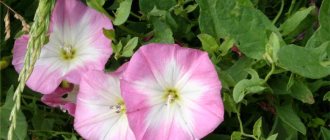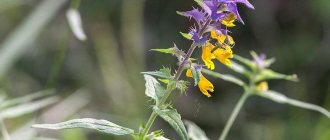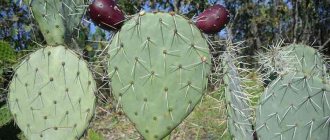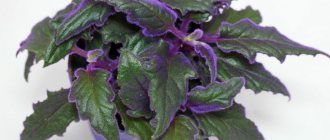The endless steppes, woven from graceful feather grass, are sung by poets and captured on the sensual canvases of great artists, awarded the most enthusiastic epithets and vivid comparisons. Feather grass (Stipa pennata) in the past was considered a typical representative of steppe vegetation. Today it has become an endangered species and has a conservation status in many countries; in Ukraine it is listed in the Red Book. The areas where feather grass used to grow densely are now occupied by agricultural land. The plant has become endangered due to the irrational use of pesticides and fertilizers, the construction of new roads, the collection of awns for decorative purposes, and the overgrowing of areas with low shrubs.
Annual mowing also plays a role, which prevents its reproduction; moreover, the grass is sensitive to trampling. Now in some regions, once famous for the original beauty of steppes densely overgrown with Feather grass, you can admire the plant in its original form only in protected areas.
Description of the plant
Feather grass belongs to the Poaceae family. It reaches a height of up to 1 m and forms loose turf. The plant is recognizable by its characteristic wavy tuft of silvery-green hard leaves up to 30 cm long. In spring they are silky and flat, and as they grow they gradually curl into a thin tube. Their outer side is smooth, the reverse side is rough. The stems are erect, smooth, slightly pubescent under the nodes.
The grass growing in the steppes has a feathery short rhizome and forms dense turf.
The plant is decorated with narrow racemose panicles collected from single-flowered membranous spikelets. Their tops are long and pointed, leathery below.
The plant is wind pollinated and tends to self-pollinate. After flowering, a fruit is formed - a grain. Each grain has a long feathery awn, thanks to which they are carried by the wind at a distance of about 100 m from the mother plant. The viability of the grains is maintained for 4-5 years. Rooted plants will form full-fledged bushes only after three years.
Popular recipes
- To treat an enlarged thyroid gland (goiter), make a milk decoction from a glass of milk and 2 tsp. chopped grass. It is necessary to boil for 5 minutes, and then let it brew for half an hour. You need to drink the decoction in small sips throughout the day. It can also be used as a lotion on enlarged glands.
- To get rid of paralysis, the following collection is used: combine feather grass and Echinops seeds in equal parts. Then mix thoroughly and take 2 teaspoons of the mixture, pour a glass of boiling water, cover with a lid, leave to settle, wrapping the container in a warm scarf. It's better to do this at night. It is most convenient to use a thermos. In the morning, the infusion is filtered through cheesecloth and drunk in small sips throughout the day.
Now you know a lot of information about feather grass, which is not only visually beautiful, but also useful for medicinal purposes.
Where does it grow
Feather grass is a characteristic representative of the forest-steppe and steppe zones of Central Europe, Scandinavia, the Mediterranean, the Caucasus and Central Asia. Refers to mesophytic plants that require sufficient, but not excessive soil moisture.
Occupies small areas in virgin areas. Prefers calcareous and rocky soils, grows in sunny, dry places, mainly in meadow steppes. Feather grass has a short and poorly developed rhizome, so it cannot survive in dense turf among other plants. But if the turf weakens due to drought, Feather grass will certainly take the vacant place in the new area.
Varieties
Below are the main types of plants used in gardening.
feather grass
Its soft flowers resemble a bird's feather, hence the name of the species. The height of this plant can reach 90 cm. It blooms in May and June. Feather grass is adapted to the climate of the middle zone; in winter it does not need shelter. Previously, it was destroyed everywhere to increase the area of fertile lands; it is currently listed in the Red Book of Russia.
Feather grass is beautiful
It is distinguished by denser panicles leaning towards the ground and reddish awns. Grows up to 1 meter in height. It grows in steppes and mountains, on rocky soil, and feels good on alpine hills. Blooms in May and June. It tolerates even cold winters well. Also included in the Red Book of Russia.
Feather grass “Fluffy cloud”
It grows in separate bushes, up to 50 cm high; the spikelets collected together really resemble a fluffy cloud.
The finest feather grass
The panicles of this species have a purple hue, the stems grow up to 70 cm. Its homeland is Mexico, so the plant is relatively thermophilic and is not often grown in the middle zone. Blooms in early summer.
feather grass (hair-like, “Volosatik”, Tyrsa)
The ears of this feather grass are silvery-green, with thin, hair-like awns; height up to 60 cm. Grows well in warm steppes.
Zalessky feather grass
It grows on rocks, rocky slopes, in infertile soil, and tolerates drought well. Listed in the Red Book of the Russian Federation.
Feather grass "Fireworks"
It is distinguished by variable leaf color throughout the season. At the end of May they are dark green, then gradually turn pink and golden, and by the end of summer they acquire red-brown hues. This species does not tolerate winter in open ground; it must be dug up and brought indoors.
Feather grass angustifolia
It is distinguished by bare, not pubescent leaves, one of the most unstable species, does not tolerate trampling.
Interesting!
Feather grass, or esparto, is a species that grows in Spain and northern Africa, where it is a food plant for camels and horses. In addition, rayon and high-quality paper are produced from the durable fibers of esparto leaves.
Feed value
Feather grass is valuable as a forage plant, but only with certain restrictions. Mostly young grass is used as fodder, which is suitable for sheep and horses. Compared to other forage grasses, it has less value and is not used in the diet of cattle.
In the second half of summer, when Feather grass fades, the leaves and stems become coarser and spikelets form, it poses a serious threat to the health and life of animals. It’s not for nothing that people call it “sheep’s death.” Fresh grass or hay cause mechanical damage to farm animals. Its seeds with sharp awns injure the mucous membrane of the mouth and nose and form fistulas under the tongue. The seeds penetrate the fur and irritate the skin, leading to abscesses.
Harm from a large amount of feather grass
Agricultural workers consider grass a weed and try to get rid of large quantities of it. This attitude is caused by the fact that feather grass, firstly, does not participate in the formation of the chernozem soil layer, and secondly, after the end of the growing season, fungi begin to actively develop in the roots of the plant, which release acidic enzymes into the soil. This prevents other grasses from growing, especially after a dry summer.
A large number of feather grass in meadows leads to an environmental disaster, because other grasses often cannot withstand drought, which gives it a great advantage. The feather grass begins to actively spread, thereby killing other plants. People have been fighting this dominance for many years, planting more valuable perennial grasses, watering dry lands in meadows, giving the opportunity to grow not only feather grass, but also other types of plants.
Often there is a hobbling of the steppes after the late fall of the grass. Such areas of the steppe quickly become overgrown with feather grass and annual weeds. Agricultural workers have to fight the weed with all known methods.
Use in landscape design
Feather grass with luxurious whitish panicles and no less spectacular leaves is an attractive plant for landscape design. It can become part of a composition, a background plant, and is no less decorative in small groups.
Feather grass prefers open, sunny and dry areas with well-drained, loose, neutral or slightly acidic soil. Does not tolerate waterlogging well. The plant is resistant to cold, so it overwinters without additional shelter.
Feather grass is propagated by seeds or by dividing bushes, which is usually done in the spring.
Beneficial features
Feather feather grass is not used in official medicine. Thanks to the biologically active substances contained in its composition, it is considered a medicinal plant and is used in folk medicine. The leaves are collected during the flowering period of the plant, and the roots - in the fall and are used to treat the thyroid gland in the form of a milk-based decoction and for paralysis due to stroke.
However, cyanogenic compounds, including trigloquinine, present in its chemical composition, have healing properties in small doses, but are poisonous in high concentrations and if used incorrectly.
People allergic to cereals should be careful when coming into contact with the plant, especially during the flowering period.
Feather grass on a personal plot
Wonderful, thin, pale yellow-green leaves topped with fluffy feathers of silver-green flowers, ripening to the color of wheat. This versatile broadleaf grass is ideal for a sunny gravel garden.
Feather grass will perfectly emphasize the long-term border between areas. It is ideal for the garden and recommended for introduction into a planting scheme. The feather grass's fluffy flower heads and foliage rise and sway charmingly at the slightest breath of wind.
The beneficial properties of feather grass, as well as the aesthetic value of this plant, make it a welcome guest in personal plots. Feather grass is often used to decorate flower beds and alpine slides.
Sometimes it acts as a background for the main elements of the composition. This plant also looks great if it is planted interspersed with other plants along garden paths.
Feather grass planting and care
Planting and replanting of feather grass begins in the fall. It is not recommended to carry out the transplantation procedure in the spring, since during this period the plant is actively accumulating strength for the flowering period. It is quite early in the feather grass.
Planting seeds in the spring also carries a certain risk: since it must be done at the very beginning of spring, in late April or early May, spring frosts can destroy the seeds before they germinate and take root.
If feather grass is already growing on the site and you just need to increase the planting area, or plant it somewhere else, the easiest way is to divide the adult bush into several parts. If this is the first planting and it is not possible to take a part of an adult plant from someone, the seed method is used.
You should choose the appropriate variety: they differ not only in decorative qualities, but also in winter hardiness. Seeds are sown to a depth of no more than 3 cm, three seeds per hole, this will ensure good germination in the event that the winter is not snowy enough or they are caught by frost during spring frosts.
The seedling method can also be used for growing feather grass. It is necessary to leave approximately 20 cm between individual bushes.
Feather grass does not require special soil fertility. On the contrary, in rich soils it may feel worse, since its weak root system has a hard time competing with other plants. It will also perform well on rocky or sandy soil.
However, feather grass does not like overly acidic soil and too high humidity. Therefore, it is useful to add a little lime to the soil before planting, and if the area is wet, groundwater is not far from its surface, it is necessary to take care of drainage.
But it tolerates drought quite well, since in nature it often grows in semi-deserts. It is advisable to plant feather grass in a sunny area.
Feather grass for decorative purposes
Despite its apparent modesty, feather grass can be used with great success in landscape design. The straw or silver color of feather grass plantings favorably sets off other ornamental plants, dividing the garden or flower garden into separate compositions.
You can use feather grass plantings to smooth out excessive decorativeness and give a corner of the garden a more natural look, reminiscent of a corner of wild nature. In addition, this is an unpretentious plant that does not require much care. Therefore, even a novice gardener can grow it.
The plant is rarely planted as individual bushes: feather grass looks much more impressive in a large mass. If desired, it can be placed in the center of the composition: many types of feather grass are decorative in themselves. To better understand what the final result will look like, you should take into account the external characteristics of a particular type, since different feather grasses can differ quite a lot.
Take into account the climatic characteristics of the species. Some of them are accustomed to warmer places. In our harsh winter, sprouts may die if they are not protected in a timely manner.
By planting it together with other flowers and grains, you can create a spectacular imitation of a flowering steppe in your own garden plot. The only difficulty can be the difference in soil preferences. While most plants love rich, refined and well-fertilized soil, feather grass prefers poor and rocky soil.
Feather grass in folk beliefs
Feather grass is most common in the steppes. That is why most of the superstitions associated with it came precisely from the steppe people - nomads and Cossacks. Such legends include the Cossack belief that feather grass is the grass of the dead. If you bring it into the house, someone in the family will die.
Oddly enough, you can trace the roots of this belief. Firstly, the time of flowering of feather grass is spring, this is the traditional time for the start of raids by warlike nomadic tribes. Therefore, we can say that the flowering feather grass brought grief.
Secondly, this plant has rather sharp spikelets. Grazing livestock could injure the tongue if they ate its shoots. After this, he could no longer eat normally and died. In addition, the feather grass that grew on the battlefields symbolized the graying hair of mothers who did not receive sons from the war.











